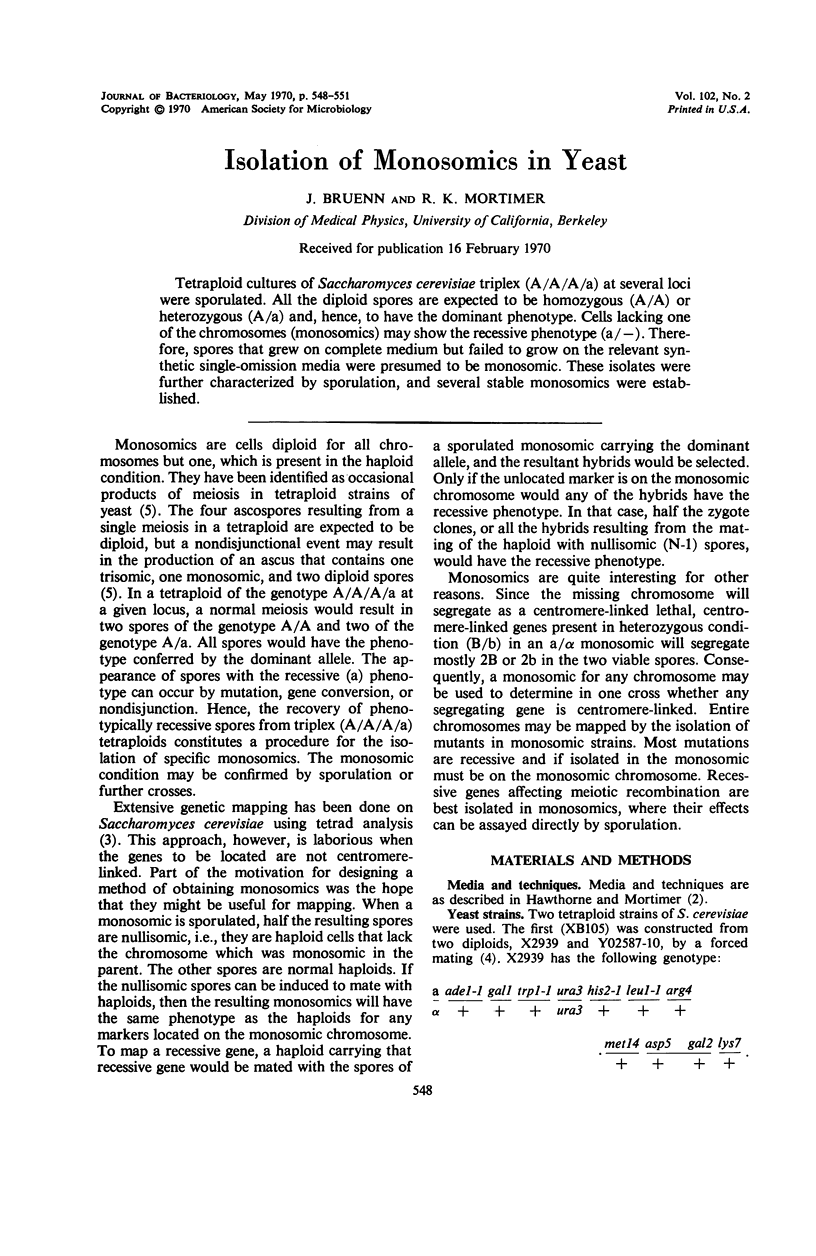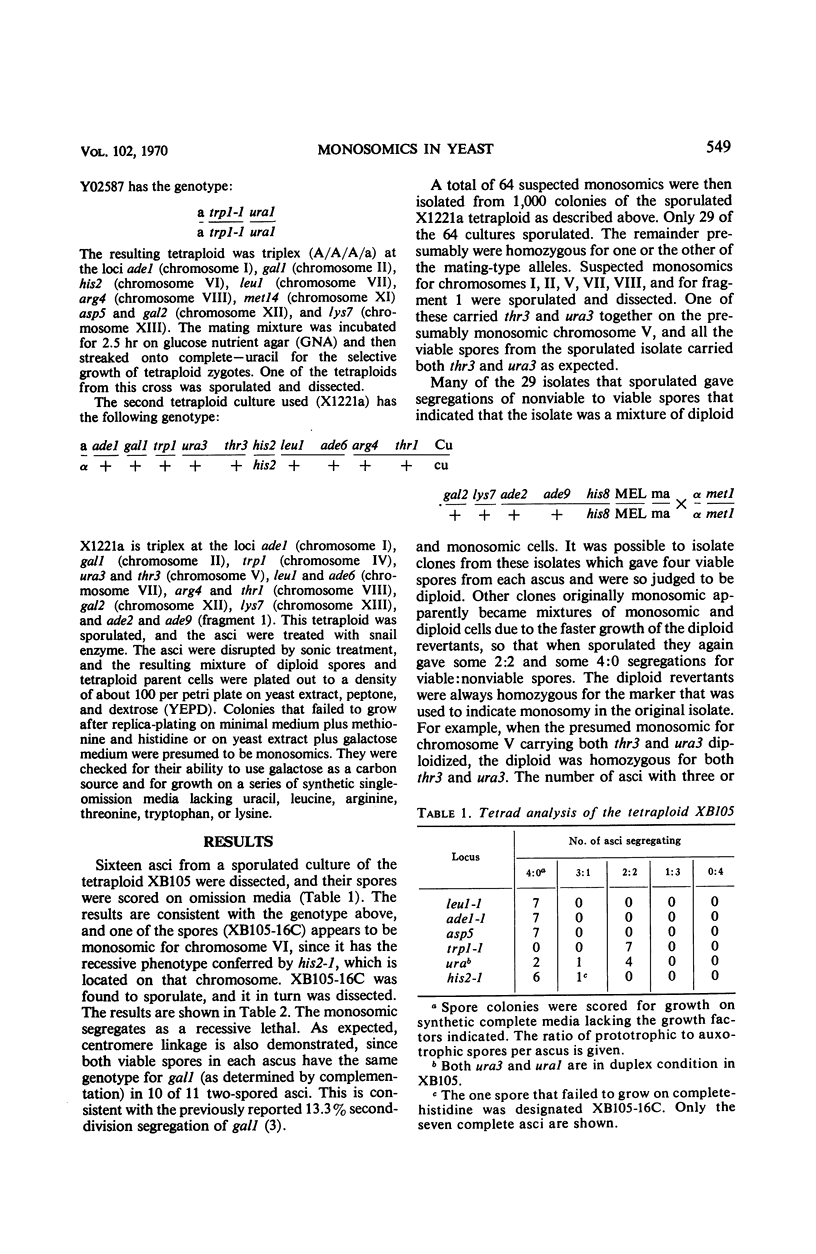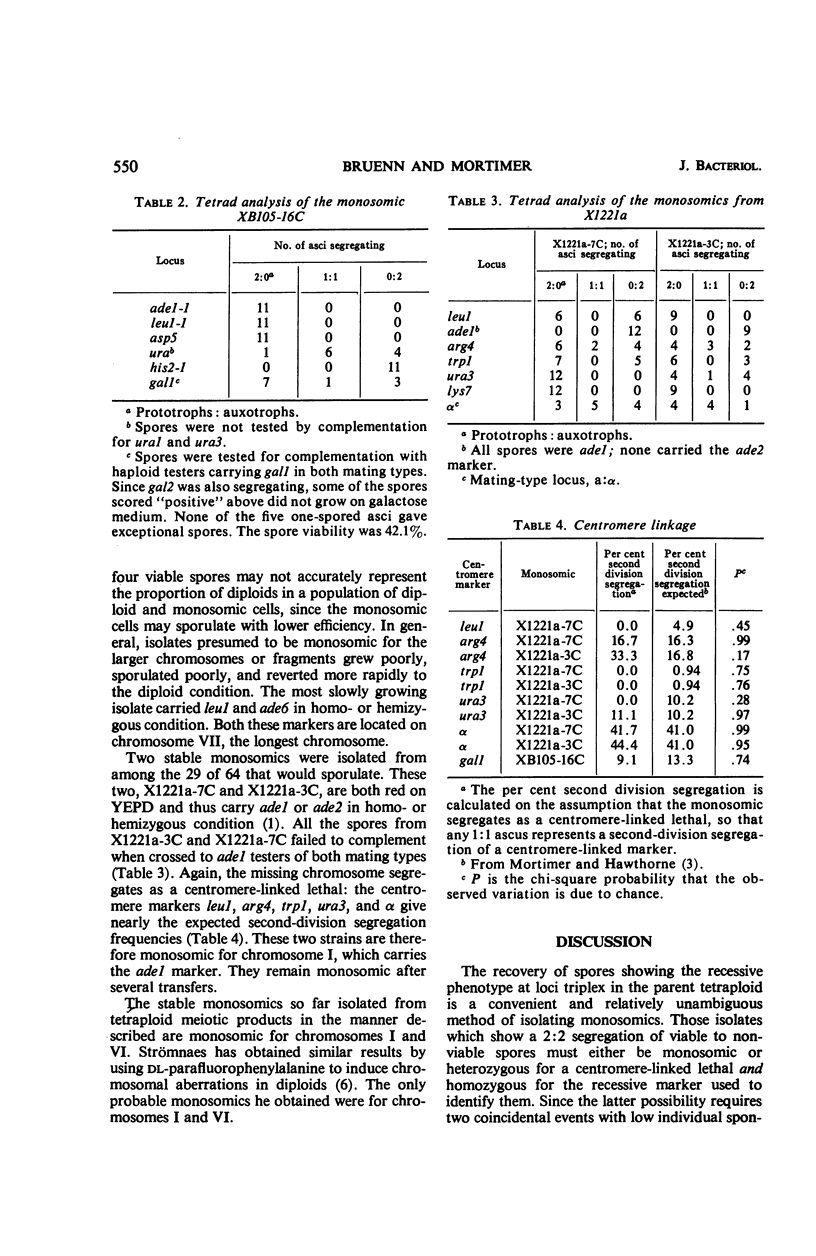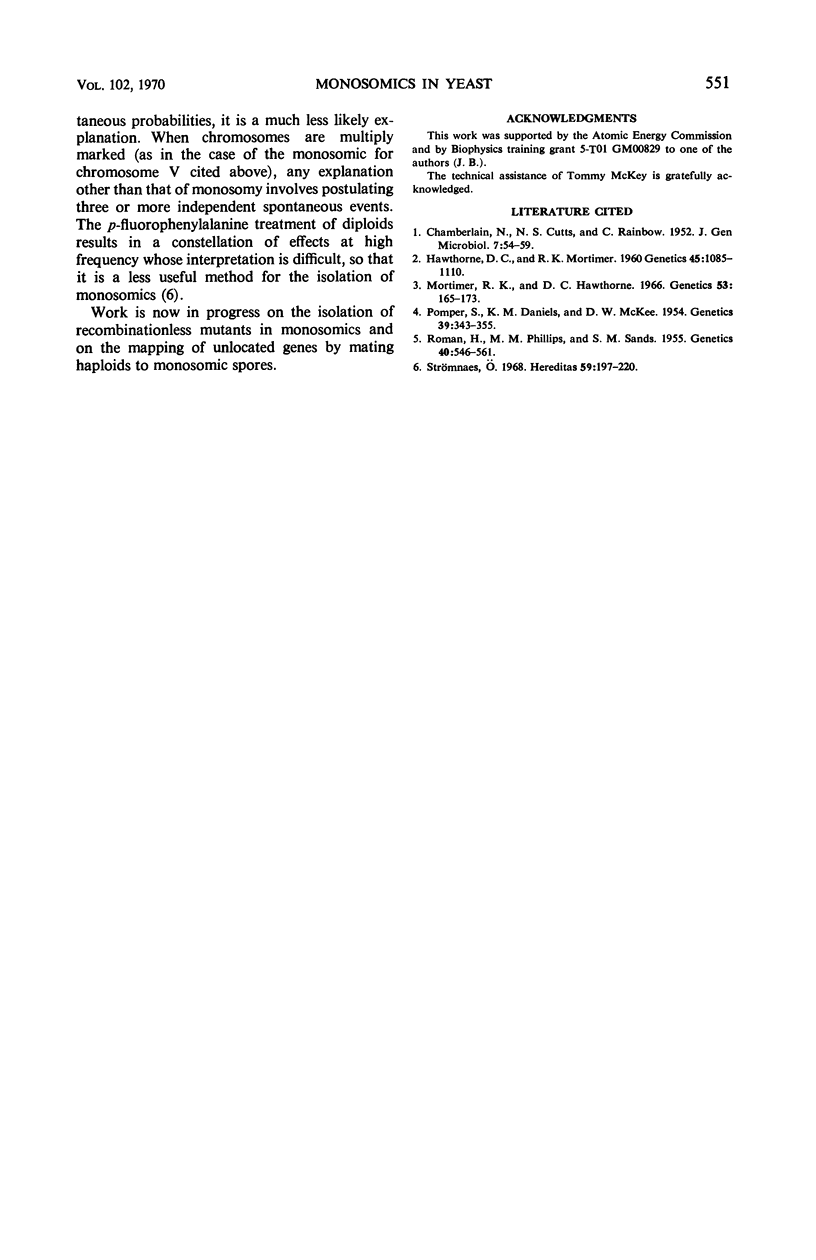Abstract
Tetraploid cultures of Saccharomyces cerevisiae triplex (A/A/A/a) at several loci were sporulated. All the diploid spores are expected to be homozygous (A/A) or heterozygous (A/a) and, hence, to have the dominant phenotype. Cells lacking one of the chromosomes (monosomics) may show the recessive phenotype (a/−). Therefore, spores that grew on complete medium but failed to grow on the relevant synthetic single-omission media were presumed to be monosomic. These isolates were further characterized by sporulation, and several stable monosomics were established.
Full text
PDF



Selected References
These references are in PubMed. This may not be the complete list of references from this article.
- CHAMBERLAIN N., CUTTS N. S., RAINBOW C. The formation of pigment and arylamine by yeasts. J Gen Microbiol. 1952 Aug;7(1-2):54–60. doi: 10.1099/00221287-7-1-2-54. [DOI] [PubMed] [Google Scholar]
- Hawthorne D C, Mortimer R K. Chromosome Mapping in Saccharomyces: Centromere-Linked Genes. Genetics. 1960 Aug;45(8):1085–1110. doi: 10.1093/genetics/45.8.1085. [DOI] [PMC free article] [PubMed] [Google Scholar]
- Mortimer R. K., Hawthorne D. C. Genetic mapping in Saccharomyces. Genetics. 1966 Jan;53(1):165–173. doi: 10.1093/genetics/53.1.165. [DOI] [PMC free article] [PubMed] [Google Scholar]
- Pomper S, Daniels K M, McKee D W. Genetic Analysis of Polyploid Yeast. Genetics. 1954 May;39(3):343–355. doi: 10.1093/genetics/39.3.343. [DOI] [PMC free article] [PubMed] [Google Scholar]
- Roman H, Phillips M M, Sands S M. Studies of Polyploid Saccharomyces. I. Tetraploid Segregation. Genetics. 1955 Jul;40(4):546–561. doi: 10.1093/genetics/40.4.546. [DOI] [PMC free article] [PubMed] [Google Scholar]


